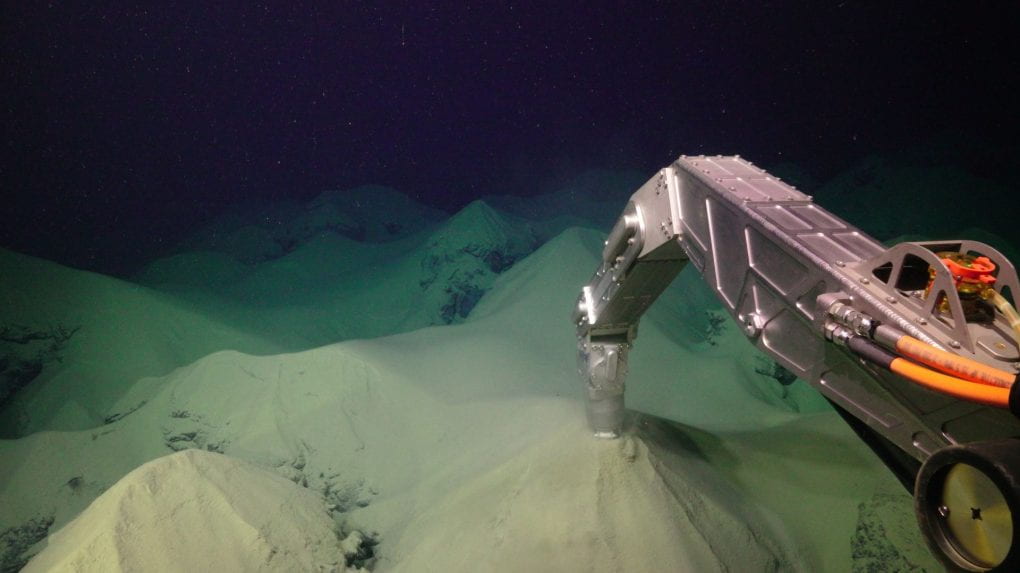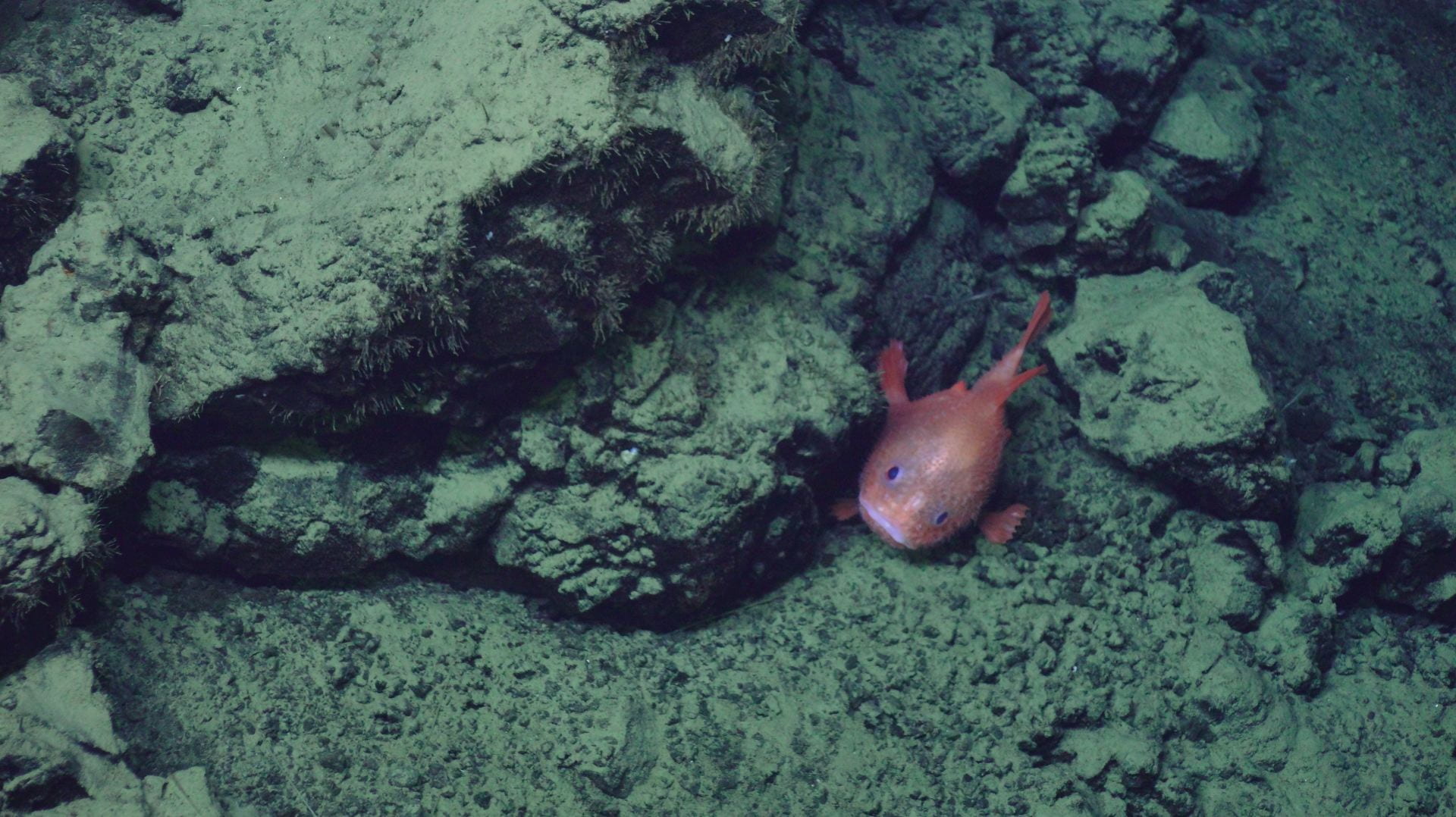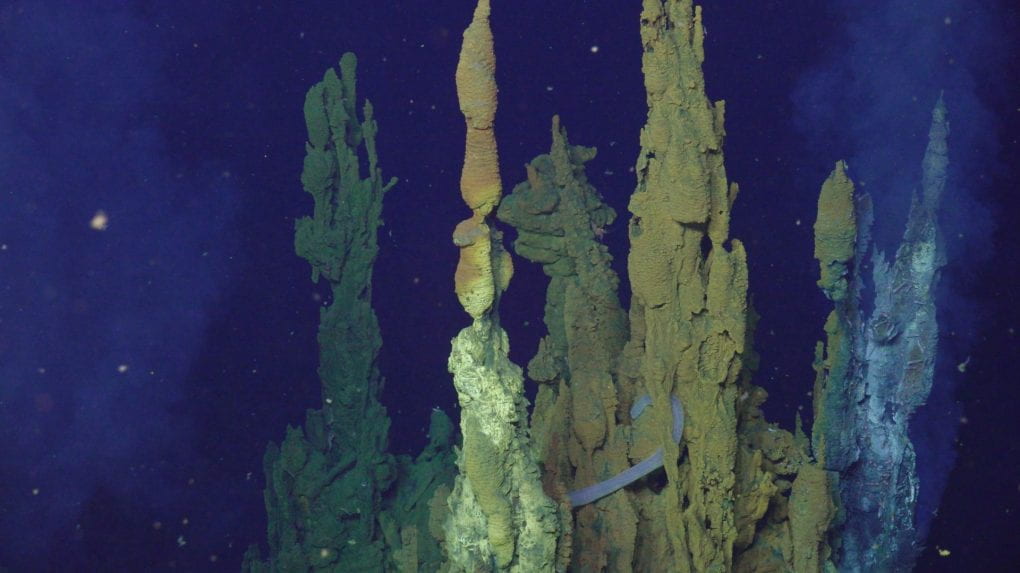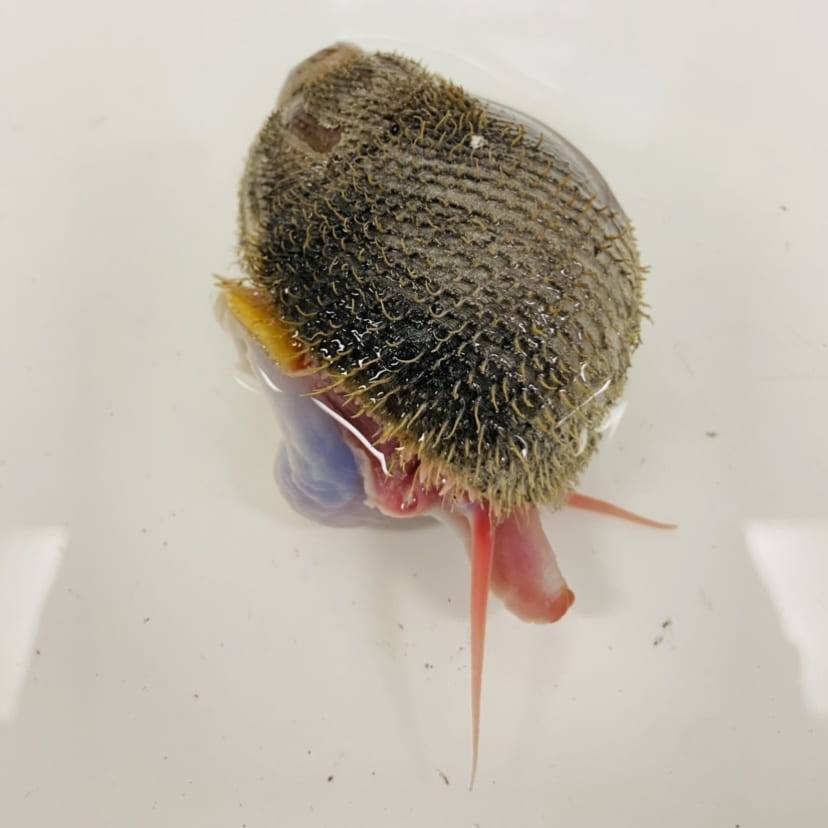April 20th, 2022. The science team is now on the second round through conducting science at our six sites in the Lau Basin. While we’ve already been out at sea for almost a month and we’ve still got 3 weeks to go! The time between each of these sites has varied between 35 minutes to 8 hours. Sometimes we would get a nice break between samples collected from Jason and Sentry. Other times we would have a quick turn around and would need to sleep in shifts to get samples processed in time. Even the transit from our southernmost site, Mariner, back to our northernmost site, Kilo Moana, was only 12 hours! Now it’s time to do it all over again. Although this time, we now know how all our sites look, and where the good collection locations are.
I want to walk you through some of the sights we’ve seen so far. When we first arrived, the first thing we saw at our sites were not snails, but instead was what we presumed was ash! Since we are so close to the Hunga Tonga Hunga Ha’apai volcano, we are assuming that this could be from the recent eruption. We’re currently communicating with some geologists in Tonga and around the world to collect observations and samples. The depth has varied across and between sites, but at Kilo Moana one of the manipulator hands on Jason disappeared completely into the ash. The ash turned our rocky sites into snow-capped mountains. At first, we were worried that all vent animals were covered. As we further explored our sites, we found concealed refuges of resilient snails. Here’s a photo at ABE, our biggest site, of a group of chimneys covered in Ifremeria nautilei, Alviniconcha sp., and some vent crabs. One thing to notice is at the apex (the smallest whirl / point of the shell) of many of these snails it’s white where the shell has broken off. It’s tough living at the bottom of the ocean on rocky volcanoes!
This next photo takes us to another site, Tu’i Malila that was very mountainous. Throughout the dive we were surrounded by huge walls of basalt with diffuse, weak, flows of vent fluid. These pockets of hydrothermal energy were inhabited by groups of animals, like these Alviniconcha strummeri here. If you look closely towards the center of the image you can actually see the shimmering water that indicates these diffuse flows mixing with the seawater. This site had many patches like this, some snail patches surrounded by groups of Bathymodiolin mussels, creating a nest-like appearance. At this site we also found many creatures peering out from between the rocks like this curious little pink sea toad.




The final site I’ll show you this time is from our final site, Mariner. This site, while active (has flowing vent chimneys), does not host our study snail species. This site will act as a control group to collect background vent data (looking for symbionts / larvae) in a place without snails. While devoid of snails, this site has some of the most spectacular vent chimney structures. Chimneys towering over 15 meters, one called the toilet bowl, “black smokers” – chimneys spewing heavy metal rich hydrothermal fluid, in all sorts of shapes. Here’s a photo of the spiky top of one of these chimneys, where you can see the irregular shape that they form in. You might also notice the long purple organism wrapped inside, which happens to be a sea cucumber! This site still had many different types of organisms, just not the snails we are studying on this snail cruise. Here’s another photo of a rock we found covered in these beautiful puffball / lollipop sponges. These little dandelion-looking creatures are actually a type of carnivorous sponge. Those long spicules radiating from the center act as a net collecting passing plankton that can be consumed by the individual. In the bottom left corner there’s also a small squat lobster.


While we’ve been enjoying our time at sea, seeing fantastical habitats in an unfamiliar world, working with amazing scientists, and getting to use frontier scientific instruments, we are disconnected from our daily lives. This past week we missed Easter, usually a time to spend with family, so we celebrated on board. We brought candy and easter eggs that we placed all around the ship. Hidden under microscopes, within coffee mugs in the galley, and within storage cabinets. If an egg was found it would be re-hid with new contents, creating a constant easter egg hunt as we’re all awake and active at different times throughout the day. Everyone could participate. Timed with some maintenance on the ROV Jason, this gave us a fun break day to decorate Styrofoam cups instead of our traditional easter eggs. These cups will go down on the side of Jason or Sentry and will shrink under the pressure from a dive. Here’s a few of the ones we crafted.



Alviniconcha kojimai
Keeping up with the pattern from the last post, I’d like to introduce another of our study species, Alviniconcha kojimai. This was one of the first of our Alviniconcha sp. that we found on this expedition. As I introduce the rest of the snails from this group, you’ll see they look very similar to each other. There are a few ways to differentiate them, I prefer to do it through the spines on their periostracum (the outer shell layer). On kojimai between each of the tall spikes there are three smaller spikes. They also have the reddest coloration on their snout and cephalic tentacles (those long protrusions). This species is found in our more southern sites, where the geology is more andesitic and hydrogen sulfide concentrations in the vent fluid decrease. Whether these changes are impacting their distribution is one of the questions we are exploring.